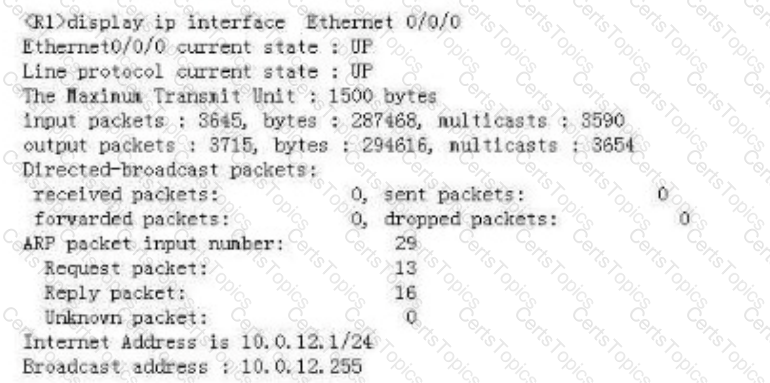Huawei Related Exams
H12-811_V1.0 Exam







Which of the following statements about the output on the router R1 shown in the figure is false?

Which of the following packets are exchanged between STAs and an AP to obtain the AP's SSID before association with the AP?